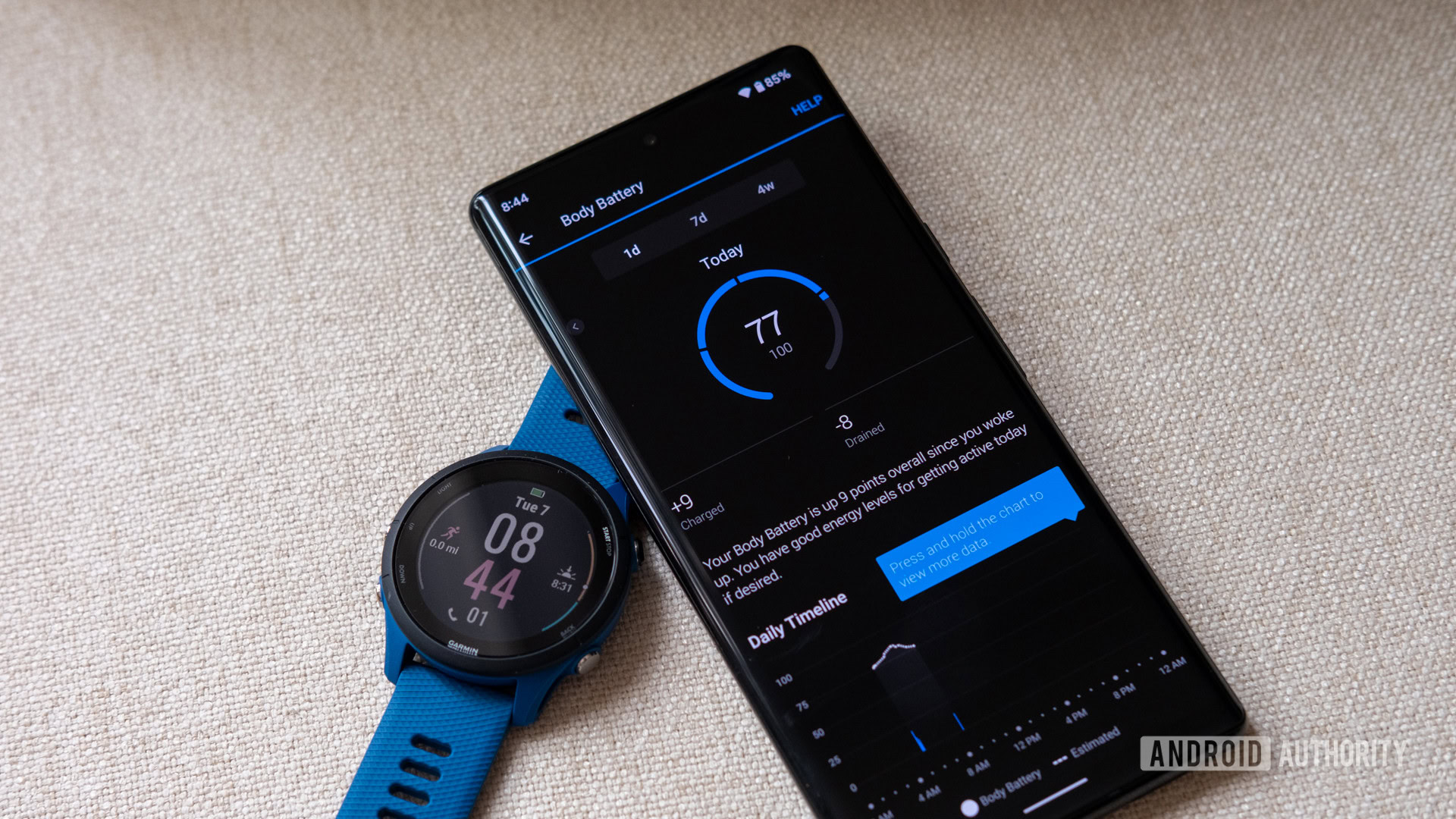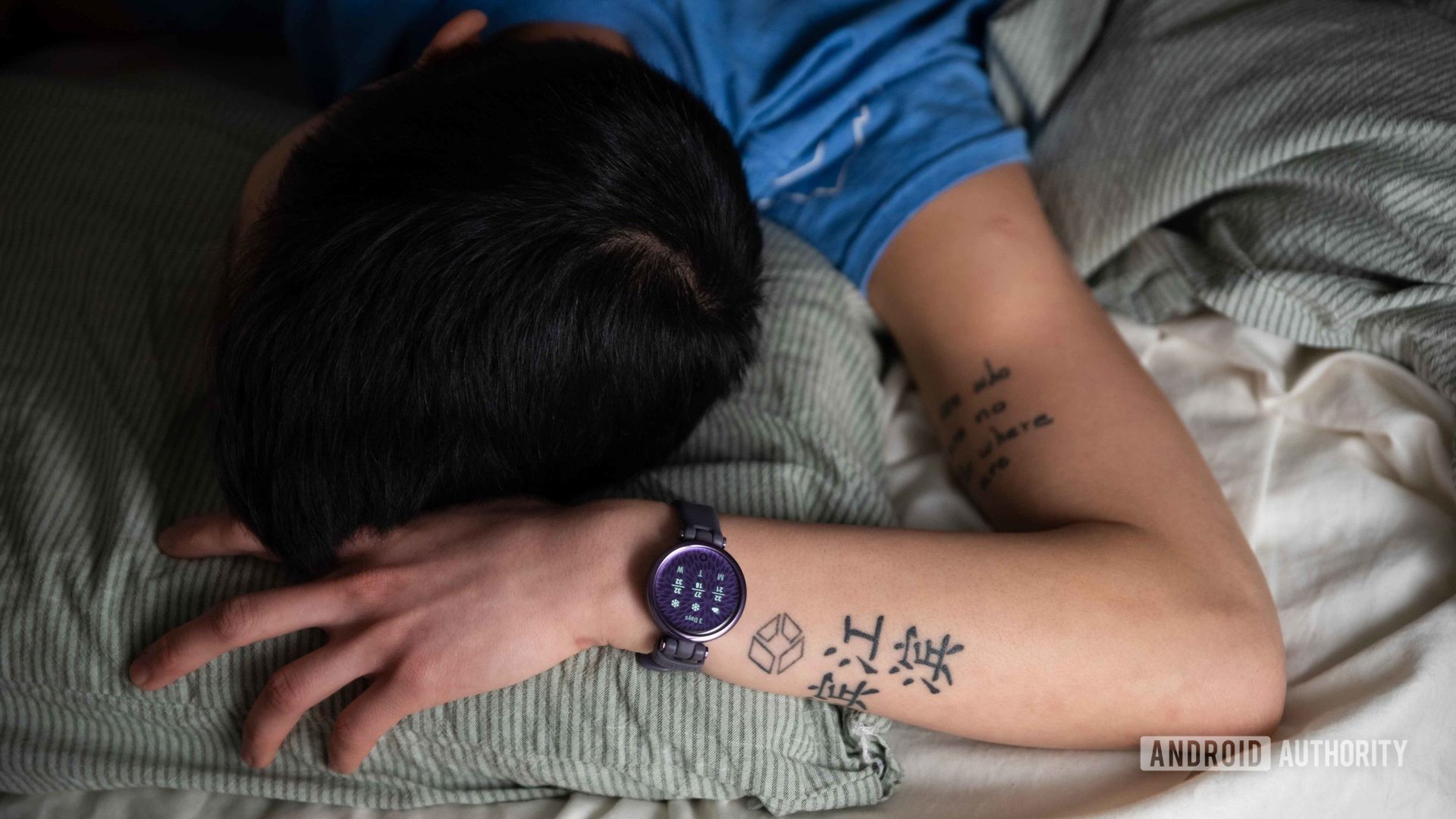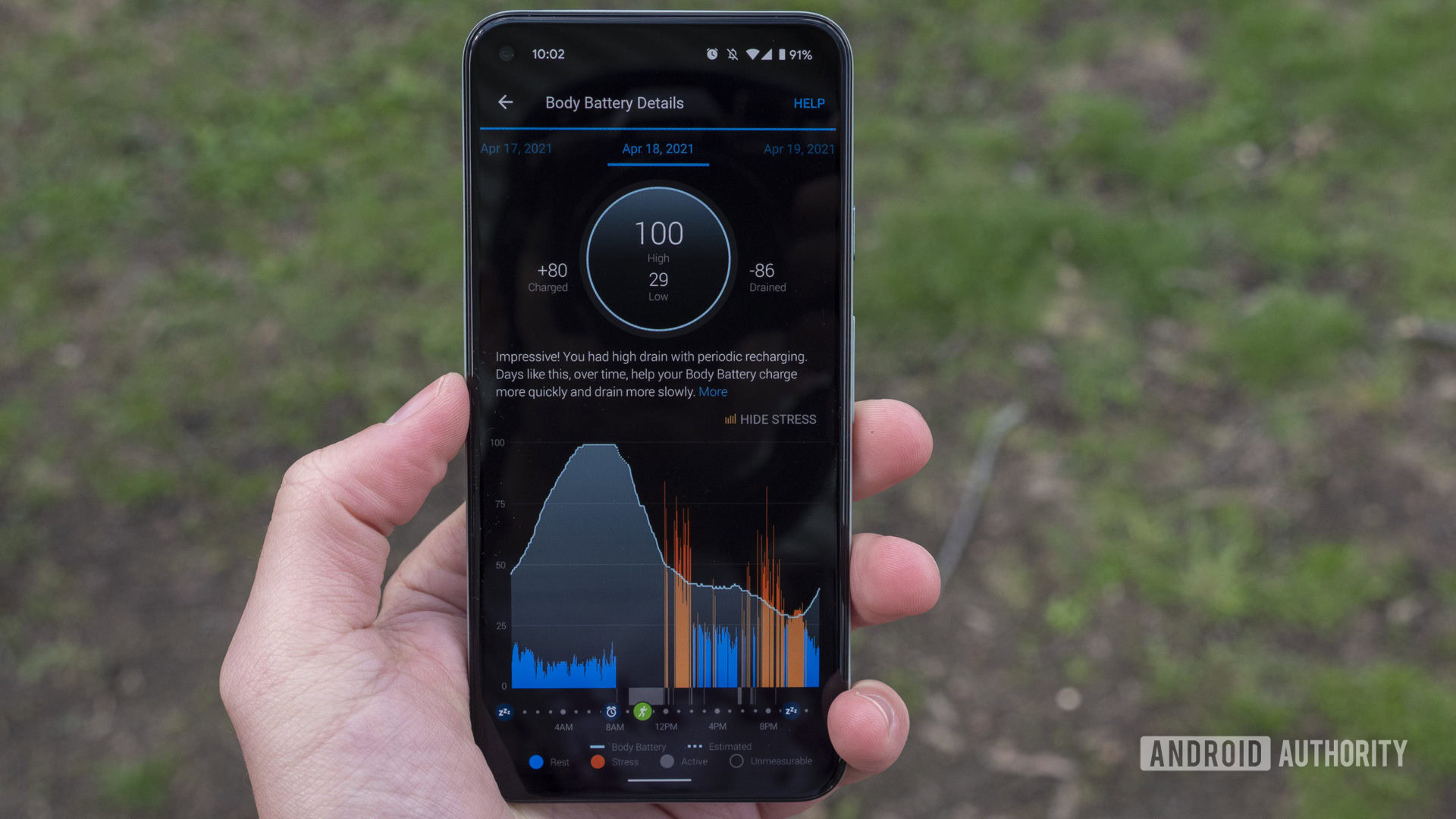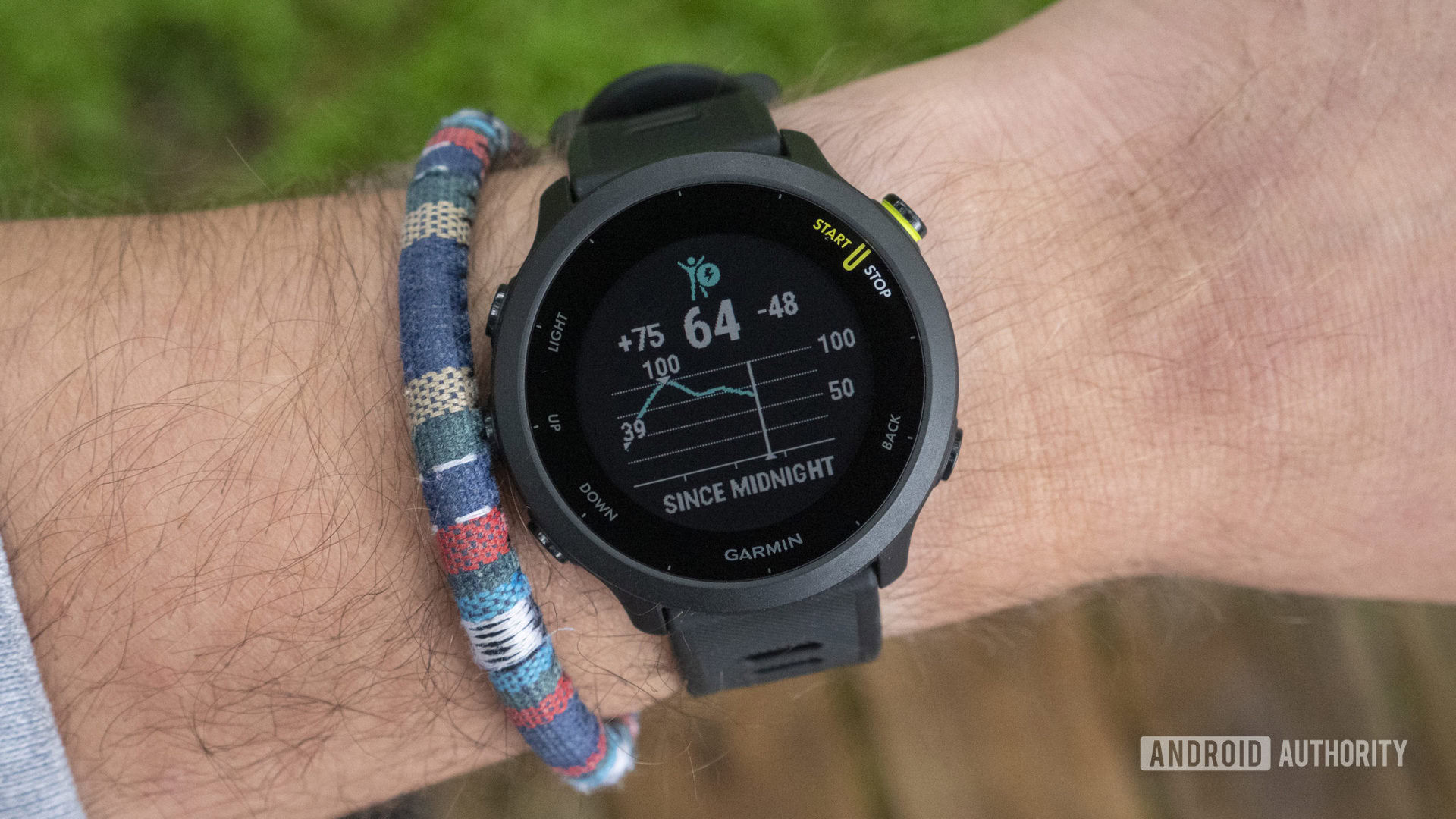Affiliate links on Android Authority may earn us a commission. Learn more.
Garmin Body Battery: What is it and why should you care?
Published onFebruary 21, 2025

Garmin Body Battery is a feature on Garmin devices that offers insight into your energy and readiness for training. The feature is available on several watches from the company. But is it a useful feature? How does it work? Allow us to explain.
How Garmin Body Battery works
According to Garmin, Body Battery combines heart rate variability (HRV), stress, and activity data to calculate the user’s likely energy reserves. It uses this information to generate a number between 1 and 100.
Garmin Body Battery levels:
- 0-25: Low reserve energy
- 26-50: Medium reserve energy
- 51-75: High reserve energy
- 76-100: Very high reserve energy
HRV is a useful measurement of sympathetic nervous system dominance. The sympathetic nervous system is responsible for the “fight or flight” response and is associated with increased heart rate, suppressed immunity, digestion, and anxiety, among other things. Normally, we become slightly more parasympathetic when we exhale, meaning our body slightly relaxes. This is indicated by a slight decrease in heart rate, providing us with “variability.”
Body Battery combines heart rate variability, stress, and activity data to calculate the user’s likely energy reserves.
If the heart rate does not change as much during exhalation — if variability is low — it suggests the body is too stressed to calm itself down. This tends to correlate with physiological arousal, illness, toxicity, psychological stress, hunger, or incomplete recovery.
Activity and stress
Garmin says HRV data is then combined with stress. This is derived from the HRV data, but it’s possible to see how the two metrics interact in the screenshots (above). Broadly, more stress = a rapidly draining battery, as you would expect.
Additionally, activity levels can help to contextualize this data. If you have been training intensively for five days in a row, there is a higher likelihood that you should be tired.
Body Battery also requires the user to wear the device consistently, including at night, with only short breaks to charge.
Sleep data also factors into your Body Battery score. Garmin suggests the best way to recharge your battery is to get a good night’s sleep while wearing the device. Napping during the day will also increase your Body Battery meter, and some Garmin devices will now track naps automatically.
Crucially, Garmin Body Battery relies on cumulative data. If you have a very restful day, this will be viewed in light of your prior activity. This is important: one night of poor sleep does not immediately equate to low energy. However, five nights of missed sleep start to rack up.
With the Garmin Venu 2 series, the company rolled out improvements to its Body Battery algorithms based on user feedback. It’s now far more difficult to achieve a Body Battery score of 100.
Why Garmin Body Battery is useful

So, how useful is Garmin Body Battery? The answer will depend very much on your personal usage. Many people find Body Battery is a fairly accurate representation of their subjective energy levels. This makes it a helpful aid in decision-making.
Knowing how hard to train on any given occasion is important, as simply continuing to push through when fatigued can break down the body without giving it an opportunity to recover. This can lead to overtraining — or under-recovery — which is considered, by some, to be the more accurate term.
At the very least, adequate recovery time is necessary to ensure the best results from training. Weight training, for example, is biphasic. While we provide the stimulus for growth in the gym, it is actually during our anabolic rest time that the muscles repair and grow. Similar processes allow for nervous system adaptations. Going harder for longer is not always the solution.
Likewise, management of the Garmin Body Battery may teach better energy management in general. It may help users adopt healthy habits. As they say: That which is measured, improves.
Finally, tools like Body Battery allow us to identify trends. If your score is consistently lower than you would like, you can begin to look for ways to improve it. Perhaps you are sensitive to that blue light from your phone before bed and this is reducing the restoration you get during sleep? Perhaps you should give up the nightcap? These are all factors you may notice when looking at your scores.

We should also recognize the limitations of these tools. The best indicator of recovery, after all, is the way your own body feels. The best way to know whether or not to train on a given occasion is simply to listen to what those systems are telling you.
Many more factors contribute to a readiness to train — factors that Garmin Body Battery can’t possibly measure. Your Body Battery score might be high, but if you have picked up an injury or are suffering from a migraine, you shouldn’t train.
Above all else, listen to what your body is telling you about your recovery.
Moreover, Body Battery is primarily a reflection of HRV. While the score might also take other factors into account, such as activity and sleep, these should already be reflected in your HRV.
Nor is this feature entirely unique. Other devices, such as the Oura Ring 3 or WHOOP Strap, have a similar ability to measure HRV and output a “readiness” score. Fitbit also debuted a similar feature called Daily Readiness Score on the Fitbit Charge 5, which has since landed on its other devices and the Google Pixel Watch series. More recently, Samsung debuted its Energy Score metric, which mirrors Body Battery’s functionality but heavily relies on sleep quality.
Body Battery also requires the user to wear the device consistently, including at night, with only short breaks to charge. When you stop using the tool, you will see dotted lines appear on the graph. This indicates estimated values generated by combining population data and individual trends. If you stop wearing the watch for several hours, however, it will reset the score. In other words? Body Battery is a commitment if you want to see the most accurate information. This will be off-putting to some users, especially those that own the bulkier Garmin products or dedicated running watches.
Garmin devices with Body Battery

Thankfully, if you want to give Garmin Body Battery a try, it’s available on a slew of devices. This includes the latest Garmin Venu 3, older Forerunner models, and beyond. You can find it on any of the following compatible devices below:
- Garmin Approach S62
- Garmin D2 Air series
- Garmin Enduro series
- Garmin Epix (2nd Gen)
- Garmin Fenix 8 series
- Garmin Fenix 7 and Pro series
- Garmin Fenix 6 series
- Garmin Forerunner 45 / 45S, 55, 165, 245 / 245 Music, 255, 265, 745, 945 / 945 LTE, 955, 965
- Garmin Swim 2
- Garmin Instinct / Instinct 2 / Solar series
- Garmin Legacy Hero / Saga series (Captain Marvel, First Avenger, Darth Vader, Rey)
- Garmin Lily and Lily 2
- Garmin Marq collection
- Garmin Quatix 6
- Garmin Tactix Delta series
- Garmin Venu / Venu Sq / Venu Sq 2
- Garmin Venu 2 series
- Garmin Venu 3 series
- Garmin vivoactive 5
- Garmin vivoactive 4 / 4S
- Garmin vivosmart 4 / Vivosmart 5
- Garmin vivomove 3 / 3S, Luxe, Style
- Garmin vivomove Trend
Once you begin wearing the device, it can take 5-7 days for it to learn your habits and adapt accordingly.
Top Garmin Body Battery questions and answers
Garmin’s Body Battery is a feature that calculates your body’s energy reserves throughout the day based on several factors. It uses heart rate variability, stress, and activity to calculate a score between 1 and 100. The higher the number, the more energy you have.
Based on our experience, Garmin’s Body Battery is a remarkably accurate and easily digestible representation of energy levels.
Low Body Battery scores may be down to lifestyle factors, including poor sleep, alcohol consumption, or incessant stress. Current factors, like illness, can also affect the score.
The Body Battery only charges when you’re completely at rest. This means it’s less likely to recharge during the day unless you take a nap or are completely at ease.
According to Garmin, getting a good night’s sleep is integral to a high Body Battery score the following day. If you aren’t getting enough rest at night, a nap during the day will also benefit your Body Battery score. You should also eat healthily, get enough exercise, and avoid stressors.